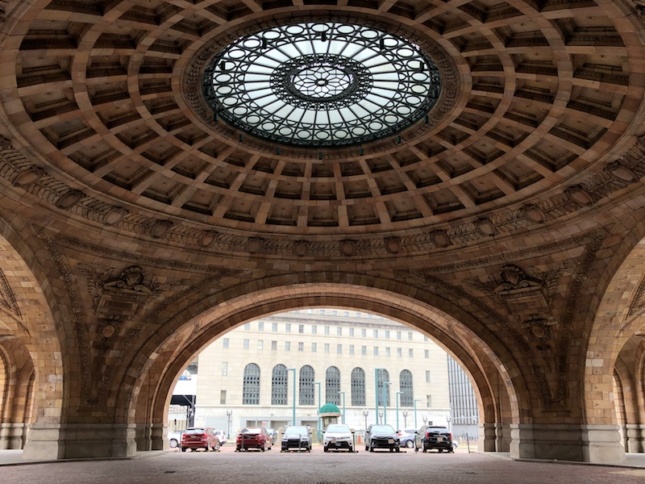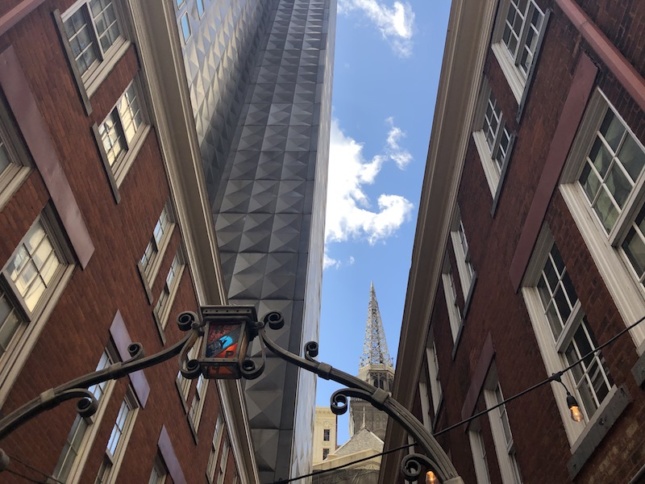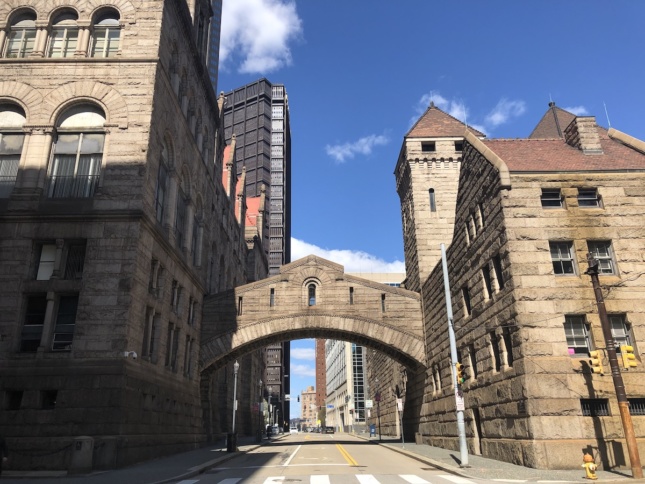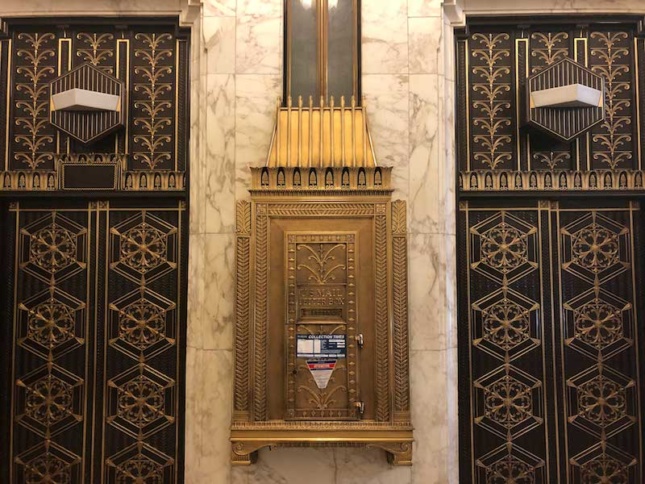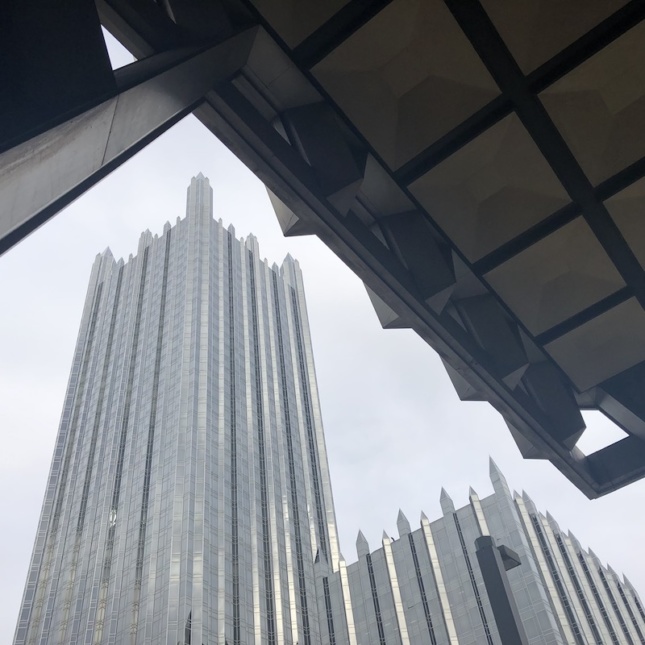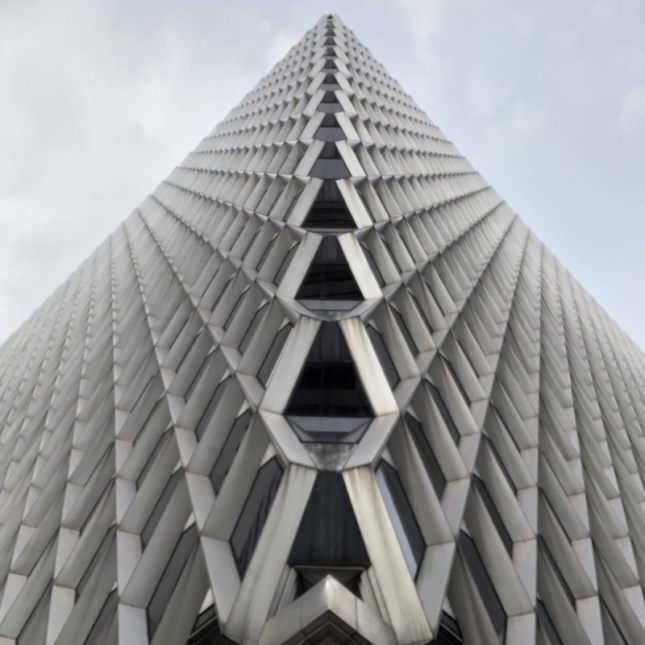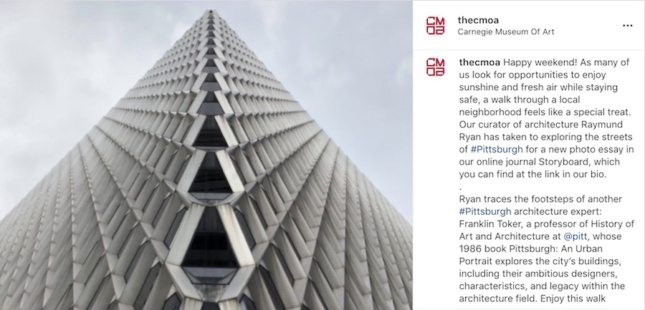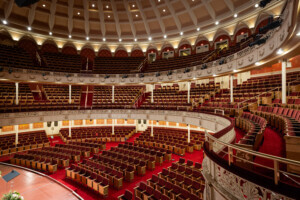Despite the dire circumstances of the moment, coronavirus-prompted lockdowns provide us with the chance to get to better know our cities and the buildings that populate them. Streets are a little less busy, sidewalks a whole lot less crowded, and, for some, regular daily schedules are largely thrown to the wind, giving way to more time for long, socially distant rambles to scope out and admire works of architecture familiar and unfamiliar. With the customary hustle and bustle of cities suspended indefinitely, opportunities to appreciate and document the built environment while getting a little fresh air have never been greater.
Ireland-born Raymund Ryan, curator at the Carnegie Museum of Art (CMOA)’s Heinz Architectural Center, is taking advantage of this intermission by getting to better know his adopted city of Pittsburgh, where he has lived since 2003. He’s doing so by retracing the steps first taken by the University of Pittsburgh professor of art and architecture history Franklin Toker in his 1986 book Pittsburgh: An Urban Portrait. Photographs taken during Ryan’s Toker-inspired walks around Pittsburgh are being shared as part of Storyboard, CMOA’s online journal whose fourth issue, per the museum, features “reflections from our staff and members of our community on ways that their lives and work have been affected by the unfolding COVID-19 pandemic.”
Ryan’s contribution, titled An Architectural Tour of a City on Pause: Pittsburgh’s Golden Triangle, tackles the first of seven chapters featured in the first edition of Toker’s book. (A revised edition was published in 2009.) “Because the book was published in ’86, you can imagine a few things have changed,” Ryan told AN. “A few buildings are gone and, of course, there are some new buildings. But by and large, it still captures the spirit of the city.”
“I’m on Instagram a lot, and when the museum closed I realized I needed to get some walks in during the day,” Ryan said when asked about the origins of the project. “And I had this strange idea: I would take my copy of Toker’s book—which is now on its last legs—and follow his footsteps.”
While Ryan, armed with a smartphone and wearing a comfortable pair of Timberland boots, still has quite a ways to go before completing the full Toker architectural tour, his jaunts so far have yielded a myriad of historic and contemporary local architectural gems centered around the erstwhile industrial hub’s skyscraper-studded downtown core.
“I’ve got two of his chapters covered now,” added Ryan. “Let’s see how long this lockdown goes on for, and we’ll see if I can get through the entire book. Although I probably won’t make it out to the suburbs. But for the downtown neighborhoods, I hope to get it all done.”
Ryan, who, as a relatively recent transplant to close-knit and linguistically challenging Pittsburgh, is the unique position of being both an architectural insider but an outsider wrote in an introduction to the project:
The most cherished guide books have a voice that allows readers to feel like they are being ushered by an empathetic expert. What comes across in Toker’s writing is an understanding of the urban structure of the city paired with his insight into multiple aspects of buildings that we think we know, or that we have somehow overlooked. He is alert to minor as well as major works, and open to obscure as well as famous architects.
Pittsburgh’s wealth of landmark architecture makes it a rich and somewhat unsung city to explore by foot with the express purpose of gawking at buildings—admirers of Gothic revival are in for a real treat—no matter what Frank Lloyd Wright may have once said.
Above is a handful of sites featured in Pittsburgh: An Urban Portrait to be revisited and photographed by Ryan during his COVID-era constitutionals around the Steel City. You’ll find more of Ryan’s photos, accompanied by snippets of critical commentary pulled from Toker’s book, at the Storyboard website.






